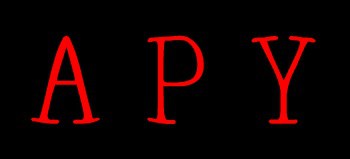What is it?
The Bechdel Test was first developed as a tongue in cheek look at female representation in cinema by Alison Bechdel in her comic strip, Dykes to Watch Out For. Since it first emerged in 1985, the test has become hugely influential. Whilst some deride the test as overly simplistic, there is no doubt that it does raise some interesting questions about how women are represented in cinema.
To pass the test, a film must have at least two named female characters, who speak to one another about something, ANYTHING, that isn’t a man.
Films which fail:

source: Pop Inquirer
Creed – an example of how the test isn’t exactly extensive, Creed fails the Bechdel Test in spite of having an arguably very progressive female character in the form of Bianca (Tessa Thompson) . Bianca’s character rises far above the “girlfriend” stereotype so often found in sports films and is a great example of how Ryan Coogler has updated the Rocky franchise, with her character being fully formed and having her own life and dreams outside of her relationship with Creed (Michael B Jordan). So why does such a great film fail the test? Because Bianca is one of the few female characters, and she never has a conversation with any other females, meaning the film cannot fulfil the second requirement.

source: Wet Paint
Toy Story/Toy Story 2 – Even kids films aren’t safe! There is a real case for arguing that achieving equality in children’s films is actually the most important of all – they are what children are growing up consuming, and go a long way in forming opinions and perceptions. It may come as a surprise, but both Toy Story and Toy Story 2 fail the Bechdel Test. Whilst there are female characters in both films, they are massively outweighed by the male centric cast and they do not have any conversations with one another. Again, this doesn’t mean the films aren’t great – Jessie is a fantastic female character who debuts in the second film – but it is interesting that across two movies there aren’t any interactions between named female characters. However, it could be argued that Pixar took it on board, because they closed the trilogy in 2010 with Toy Story 3, which does technically pass the test.

source: Youtube
The Big Short – Adam McKay’s Oscar nominated film depicts the real life circumstances of a group of men in the run up to the 2008 housing mortgage crisis in the US. There are few female characters outwith some celebrity cameos from Margot Robbie and Selena Gomez, so it comes as little surprise that the film fails the test. Films based on true events are always interesting to talk about in relation to the test, as it highlights how gender inequality is an issue which impacts our society as a whole.
Why is it important?

source: Victim to Charm
The above films are just a very small slice of the hundreds and thousands of films which fail the test, giving a sense of how the representation of female characters is an issue which is widespread across almost all aspects of film, from animated children’s films to adult orientated content.
The Bechdel Test does have a place, even in just creating a dialogue about how women are represented in films.It should not be used as the only way of measuring gender issues in cinema, and a film failing the test clearly does not automatically make it a sexist film, but it does raise interesting questions about the ratio of men to women in cinema.
For instance, take the situation and apply it to male character – there aren’t many films which would fail the test. We live in a society where women make up 50% of the population, so why aren’t we seeing those proportions translated onscreen? The Bechdel Test provides a way to highlight this, and whilst a lot of the details may slip through the cracks in the process, it has merit in being able to do so.
What do you think of the Bechdel Test? Share your views in the comments section!

